

Did you know the Netherlands, a bustling hub of innovation, is harnessing wind power to fuel entire cities? Yes, cities like Rotterdam are setting records! It's the hidden revolution happening right under our noses. But what are the secrets behind this unprecedented growth?
With climate change becoming an urgent global emergency, the Netherlands is leading the charge toward a sustainable future. This groundbreaking shift isn’t just environmentally necessary; it’s economically lucrative too, drawing attention worldwide. So, what's fueling this green wave?
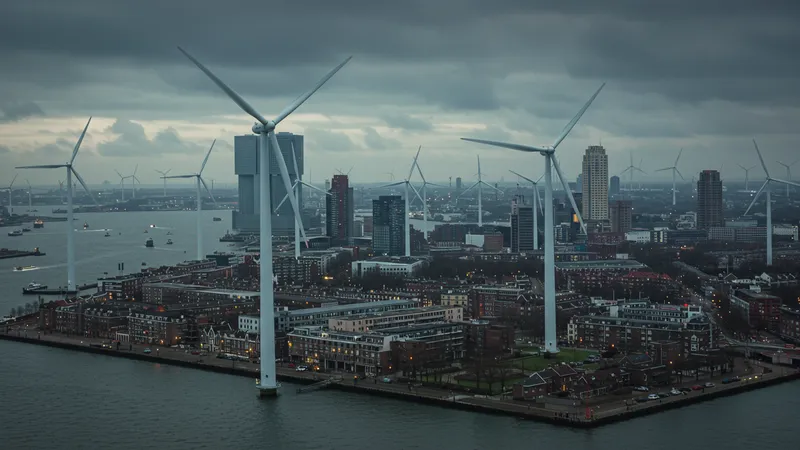
Surprisingly, many have yet to realize how renewable tech isn’t just cutting emissions—it's slashing utility bills too, saving households up to 30%. The rapid rise in demand? Experts say it's fueled by cutting-edge technologies making renewable sources cheaper than fossil fuels. But that’s not even the wildest part…
Consider this: Some Dutch companies are developing energy-positive buildings that generate excess electricity. These self-sustaining marvels could change urban life forever. And guess what? We’re only scratching the surface of what's happening in this greener-than-ever landscape. But what happens next shocked even the experts…
The renewable revolution in the Netherlands owes much to tech giants investing heavily in green innovations. For instance, Google has adorned its European data centers with wind power contracts, reducing its carbon footprint significantly. This step not only highlights environmental responsibility but also showcases a remarkable shift in corporate strategies toward sustainability. Is this the new benchmark for global companies?
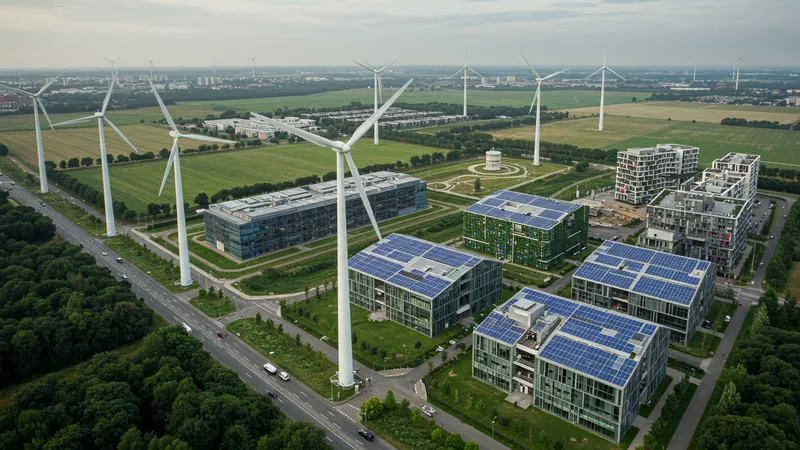
Meanwhile, regional startups like Solar Visuals are transforming how we perceive solar energy. By integrating aesthetically pleasing solar panels into urban landscapes, they make sustainability an integral part of city life. This breakthrough is creating architectural wonders that don’t just stand out but significantly contribute to green energy output. What’s the catch?
These advancements are not without challenges. Initial investments can be hefty, deterring smaller firms. Yet, thanks to government subsidies and green loans, financial barriers are becoming less daunting. Small and medium-sized enterprises are gradually joining the sustainability movement. Is this the dawn of a new economic era?
But there’s one more twist… The growing interest from tech companies is propelling research in other renewable domains, from wave energy to biofuels, promising even more futuristic breakthroughs on the horizon. What you read next might change how you see this forever.
While renewable energy seems like an endless wellspring of promise, it carries hidden costs few discuss. For example, the initial setup of wind turbines or solar farms can be incredibly resource-intensive. Rare Earth metals, essential for constructing turbines and panels, are mined in ways that paradoxically harm the environment. Is the solution more problematic than the problem itself?
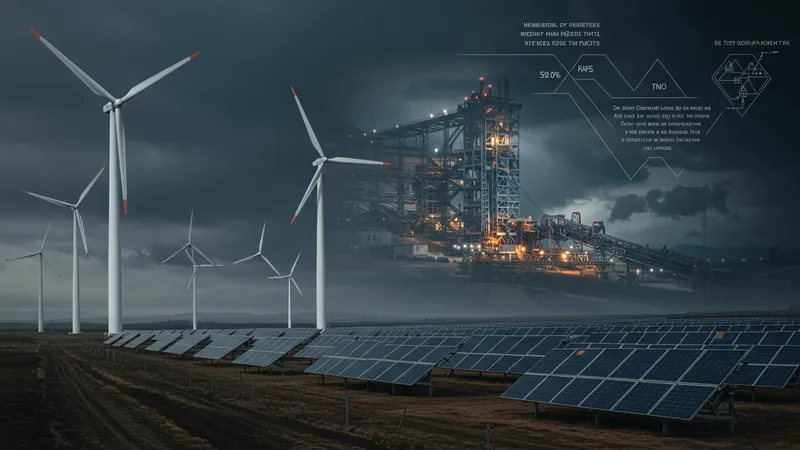
Many also overlook the energy storage conundrum. Batteries used to store renewable energy often rely on lithium and cobalt, elements with mining practices that raise ethical and environmental concerns. Addressing these underlying issues is crucial, but current solutions remain far from perfect. Will this technological paradox stall progress?
Moreover, ensuring that energy generation remains stable and reliable as we switch to renewables presents logistical challenges. For example, solar and wind sources are intermittent by nature. Balancing supply and demand becomes increasingly complex with green energy integration. Could this be a recipe for future energy crises?
Yet, despite these pitfalls, advancements continue to quell concerns. Creative innovations like smart grid technology and improved recycling methods offer practical forward motion. As these solutions evolve, they're mitigating the hidden costs, bringing us closer to a sustainable reality. But what lies ahead paints an even more intriguing picture…
In the Netherlands, a surprising ally in the march toward renewability is agriculture. The nation’s extensive horticultural industry is leading the shift to clean energy in a way no one anticipated. Prominent greenhouses, for example, are now doubling as renewable power plants, using cutting-edge solar and geothermal technologies to produce crops sustainably. Can this approach feed more than just the Netherlands?
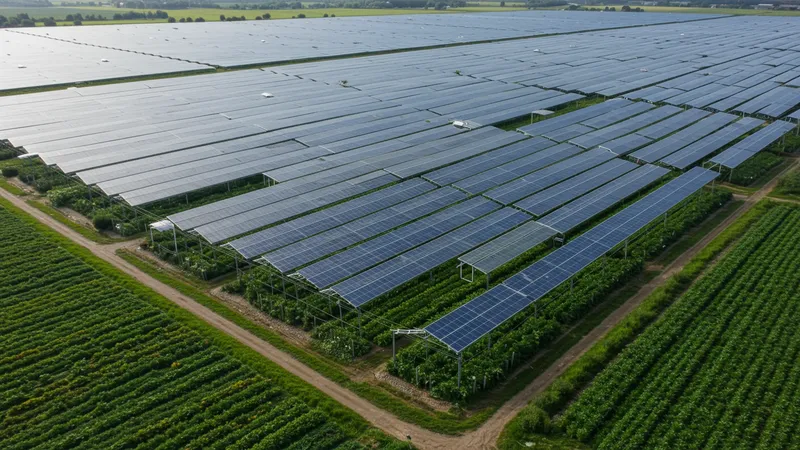
One key development is the adoption of agrophotovoltaics, where crops and solar panels coexist symbiotically. This dual-use of land maximizes productivity and electricity generation. Local farmers have seen considerable economic benefits, garnering significant interest from agricultural sectors worldwide. Could this be the farming of the future?
Meanwhile, bioenergy projects are turning agricultural waste into valuable biofuels. As Dutch farms utilize this waste-to-energy approach, they reduce waste and emissions while providing a renewable fuel source. It’s a potent example of innovation reimagining traditional industries. But what surprise does this hold for global agriculture?
Despite these advancements, the integration of renewables in agriculture isn’t without hurdles. Scaling up these technologies requires substantial investment and cooperation between sectors, often hindered by bureaucratic obstacles. However, ongoing partnerships suggest an optimistic future. And there’s even more beneath the surface that could transform the entire agri-tech landscape…
Have you ever thought about the sea doing more than just being picturesque? The Netherlands sees its coastline as a gateway to a new energy frontier—wave energy. Still in its nascent stages, this renewable source could revolutionize the Dutch energy mix. But what’s holding it back?
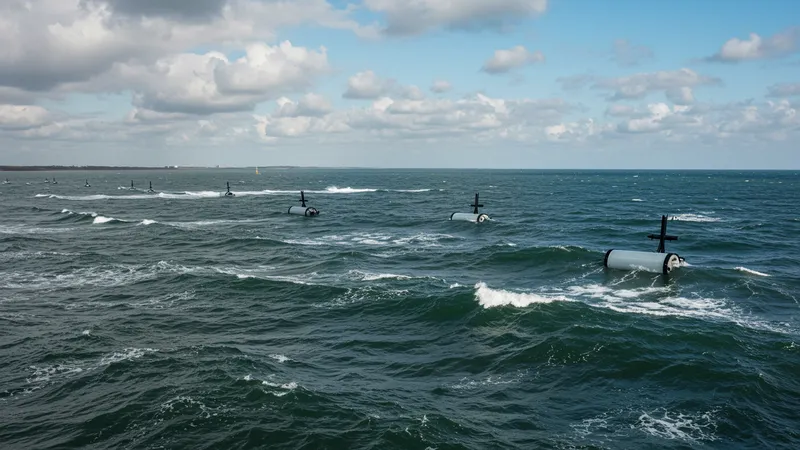
Currently, innovative projects like WaveRoller are attempting to harness the reliable push and pull of ocean waves to generate electricity. With the potential to supply up to 40% of the nation’s energy needs, wave energy could become a game-changer. However, deploying such technologies widely remains a formidable challenge due to technical and financial hurdles. What unexpected opportunities await beneath these tides?
Aside from generating power, wave energy systems serve a dual purpose by aiding in coastal protection, reinforcing shorelines against erosion and rising sea levels. This dual functionality positions wave energy as a valuable climate change countermeasure. Could this be the answer to coastal erosion woes?
Despite promising pilot projects, full-scale implementation is slow. Technological constraints and high initial costs plague mass adoption efforts. Nevertheless, sustained government backing and technological breakthroughs offer promising prospects. What will the future bring for this oceanic powerhouse? Keep reading to find out.
The Dutch transport sector is undergoing a quiet revolution as electric vehicles (EVs) replace traditional combustion engines. With some of the highest EV adoption rates globally, the Netherlands is setting an electrifying pace. But, can this momentum sustain in the long haul?
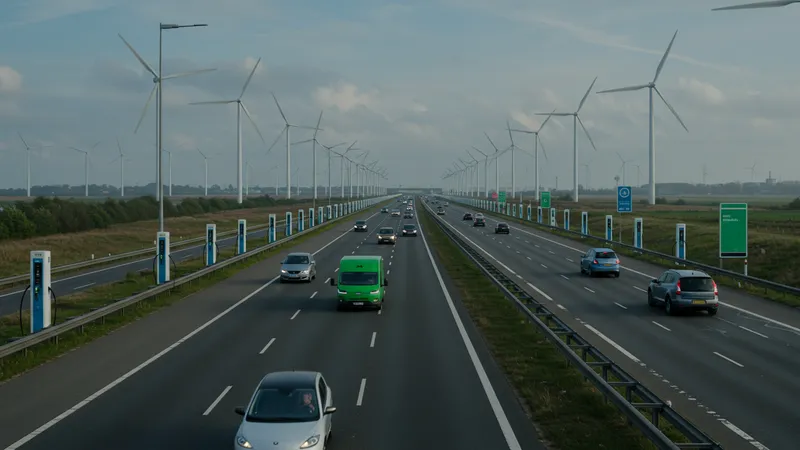
A significant factor driving EV popularity is the government’s ambitious incentives, including tax rebates and toll exemptions. However, with the market becoming increasingly saturated, questions arise about infrastructure adequacy. Can the current grid handle the charging demands?
Elsewhere, innovative solutions like Bidirectional Charging are emerging—allowing EVs to return unused energy to the grid. This not only supports renewable integration but also stabilizes electricity supply. How might this reshape national power dynamics?
Despite challenges, the EV market continues to surge forward, suggesting a feasible decrease in national emissions. Yet, this green transition involves more than just vehicles; comprehensive policies and public adoption are equally vital. But there's still an unforeseen obstacle that could change the road ahead. What is it? Keep exploring to find out.
The backbone of any renewable energy system is its distribution network, and smart grids are leading this green renaissance in the Netherlands. Using sophisticated data analytics, these grids optimize energy transmission and reduce waste. Could this tech be the conduit to a sustainable future?
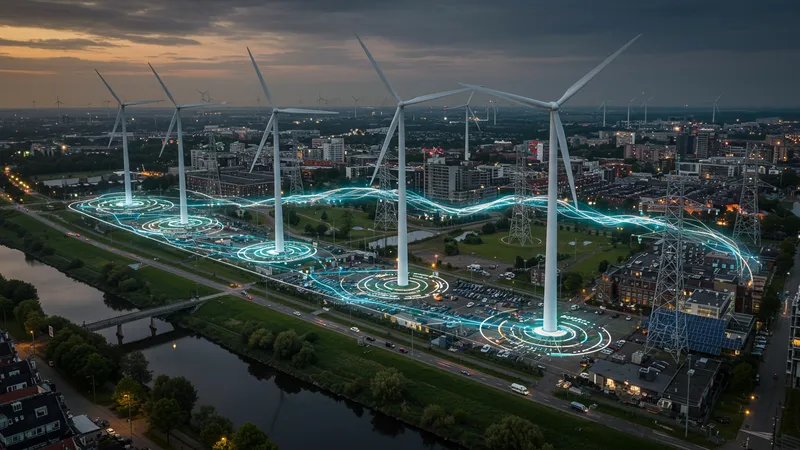
By integrating renewable sources directly into the grid, smart grids manage supply and demand with unparalleled precision. Homes and businesses experience fewer power outages, and efficiency hits new highs. But as data swells, is security keeping pace?
Standard metering systems are fast being replaced by smart meters, giving consumers real-time insights into consumption habits. This transparency encourages energy conservation—a win-win for the environment and domestic expenses. What could be the hidden drawbacks, if any?
As the Netherlands continues to be a forerunner in smart technology adoption, questions remain about security and privacy. As dependency grows, the vulnerability to cyber threats increases. So what are industry leaders doing to safeguard our smart futures? The answers may surprise you…
Energy storage is the unsung hero of renewable solutions, playing a crucial role in stabilizing the grid. The Netherlands is pioneering battery technology to store surplus energy, which is vital for a sustainable transition. What are these new developments?
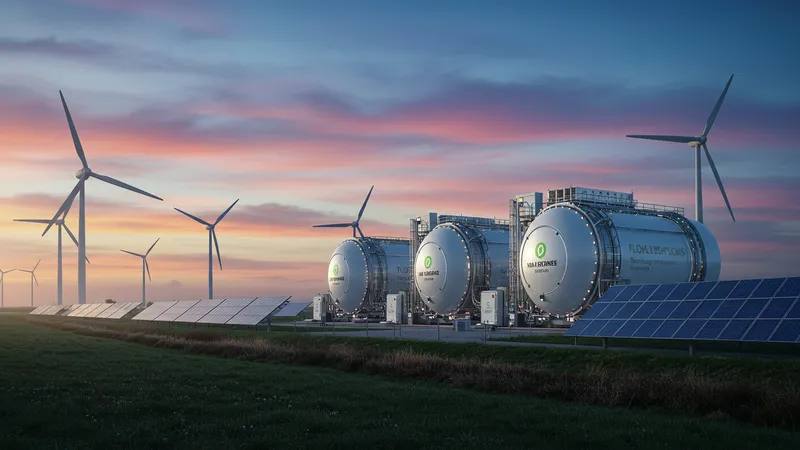
Flow batteries, with their long duration and high capacity, are gaining traction for large-scale energy storage Solving intermittency issues faced by renewables, these technologies could herald unprecedented energy resilience. But, what challenges do they currently face?
The race is on to develop solutions like gravity-based storage systems—imagine lifting heavy blocks or water to store potential energy. These innovations offer not just storage but an innovative method of converting energy back to electricity on a large scale. How realistic and cost-effective are they?
Despite the promise, there exists considerable debate over the environmental impact of widespread battery deployment. Yet, with materials science advancing rapidly, sustainable materials may soon minimize these concerns. Could these developments redefine renewable integration? Only time—and a few more research breakthroughs—will tell.
The wind energy sector is often seen through the narrow lens of wind turbines when, in fact, it encompasses a broader range of technologies. The Netherlands is leading with innovations that include aerial wind technologies that could capture winds at higher altitudes. Could this redefine what's possible within renewable energy?
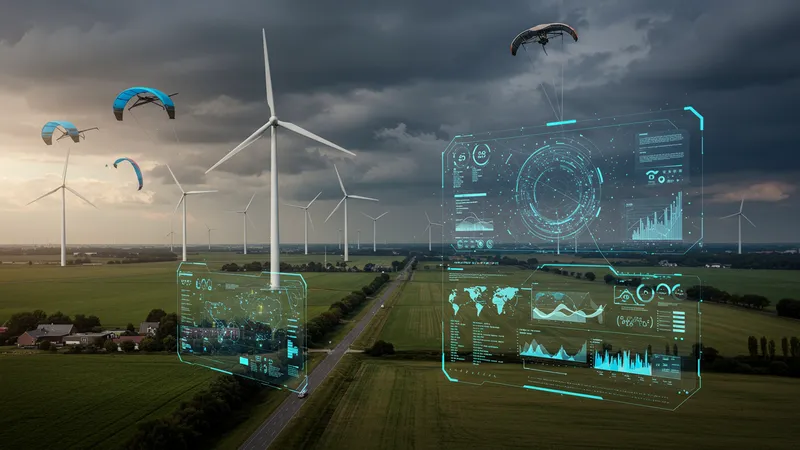
New developments in digital twin technology allow wind farm operators to simulate performance scenarios, optimize turbine placement, and reduce downtime. This imaginative application of digital modeling sets new benchmarks for operational efficiency. Are these technologies destined to spread beyond the Netherlands?
The offshore wind farms in the North Sea hold immense potential, yet they face political and ecological hurdles. Balancing marine life conservation with energy ambitions remains a complex yet critical challenge. So how are experts proposing to resolve it?
Despite progress, the wind sector’s future hinges on tackling these multifaceted issues, prompting tech collaborations and policy reforms. As the Netherlands navigates these complexities, a clearer picture of sustainable energy extremes is emerging. But is it enough to energize Europe entirely? Discover more as we continue...
The Dutch government plays an integral role in the progression of renewable energy through sound policy frameworks. By incentivizing green tech and green jobs, they're fostering a landscape ripe for sustainable growth. Could this be a global model for climate policy?
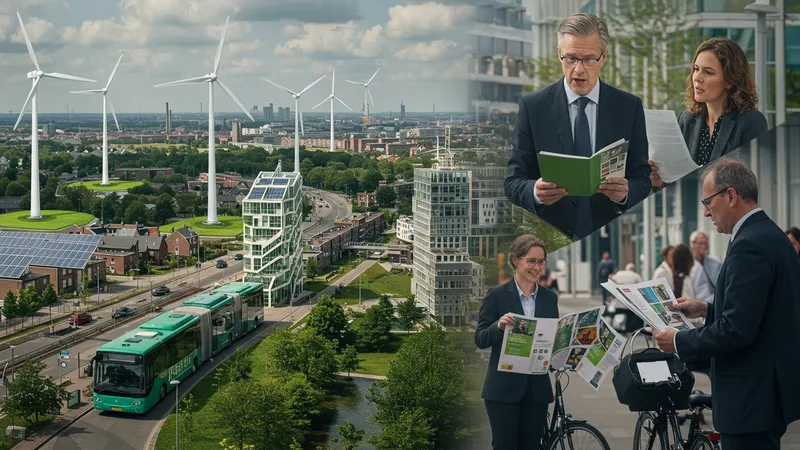
Programs centered around reducing greenhouse gases are spurring innovation, affecting everything from transportation to waste management. On the global stage, these strategies are bolstering the Netherlands as a pioneer in eco-friendly advancements. How are these policies influencing international climate dialogues?
However, criticisms still linger about the pace of implementation versus environmental imperatives. The intricate dance between industry demands and environmental needs presents complex policy challenges. So where does the balancing act sit, and who stands to benefit?
In navigating these challenges, the Dutch government’s proactive support remains vital. With forward-thinking measures, they're well-positioned to facilitate greater milestones. Can they maintain their momentum to inspire a cleaner world? Keep reading, as the final reveal is yet to come.
The Netherlands is a fertile ground for green tech startups making waves in the renewable sector. Companies like Lightyear, producing solar-assisted electric cars, are shaping tomorrow’s sustainable realities. What makes them stand out in an saturated market?

Unlike traditional startups, these firms are embracing sustainability from the ground up. Their mission-driven focus attracts investors keen on future-proofing their portfolios. Yet skepticism remains—can they deliver on their ambitious promises?
Despite fierce competition, these startups are gaining traction with revolutionary concepts, effectively disrupting established norms. Collaborative efforts with tech giants and governmental bodies are accelerating their growth and impact. But what risks accompany such rapid expansion?
Emerging players are crucial in setting new paradigms, much-needed to tackle climate change challenges. Fostering and nurturing these startups can yield significant dividends for society and the environment. Could these innovators be the linchpin for global sustainable transitions? Our journey reveals even more.
The success of the renewable energy movement strongly hinges on public perception and engagement. In the Netherlands, campaigns are actively educating citizens on the importance of sustainable practices. How effective are these efforts in truly altering mindsets?
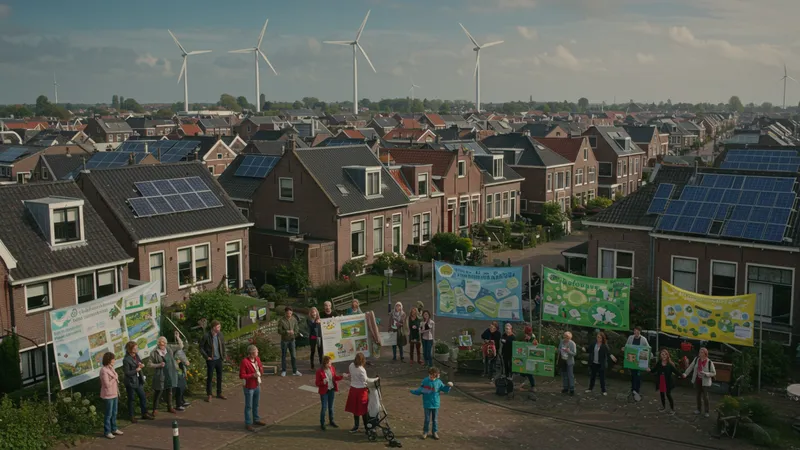
Community initiatives are popping up, leading to a groundswell of grassroots support for clean energy projects. By involving locals, these programs tailor solutions to meet specific community needs. Will these collaborative efforts stand the test of time?
However, misinformation and skepticism still pose challenges. Ensuring transparency and accessibility in renewable projects is essential to curb misconceptions. What strategies are in place to address this seamless transition to green tech?
As public consciousness about climate impacts heightens, so too does the demand for accountability and action. By engaging citizens in meaningful dialogues, we can foster a more informed and proactive populace. Is the shift in public opinion potent enough to drive real change? Judgements await.
As we reach the culmination of our exploration, the Netherlands—often awash with vibrant tulip fields and iconic canals—stands at the forefront of the green revolution. With each step toward renewable solutions, this small but mighty nation is crafting a legacy for future generations—a legacy of sustainability, resilience, and hope.
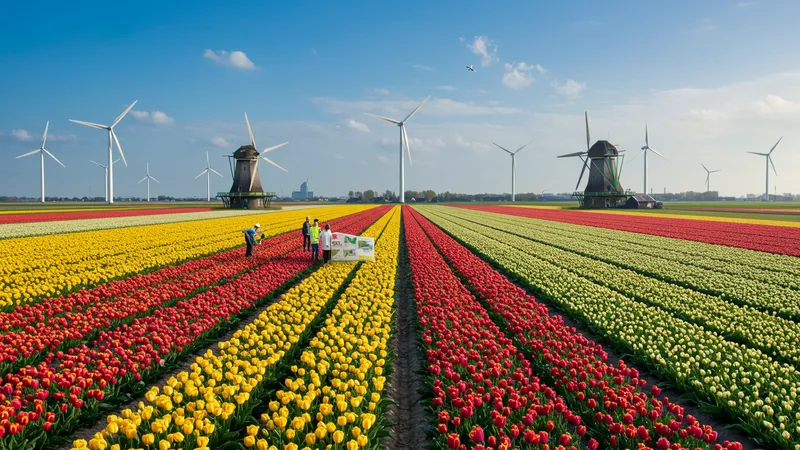
While challenges undoubtedly remain, what defines this journey is the Netherlands' indomitable spirit and commitment to solving the climate conundrum not just locally but with global implications. The progress we see is a testament to innovative collaborations between government, industry, and citizens.
The real beauty of the green revolution lies in its interconnectedness—with the potential to transform economies, inspire global policy shifts, and reshape our relationship with planet Earth. Each effort, each innovation, and each policy adjustment carry profound potential for meaningful, lasting change.
What happens next will be more than just technical breakthroughs; it will redefine how humanity interacts with its world. Let's continue this conversation, champion these endeavors, and share these stories. The future is green, and acknowledging its power starts now.